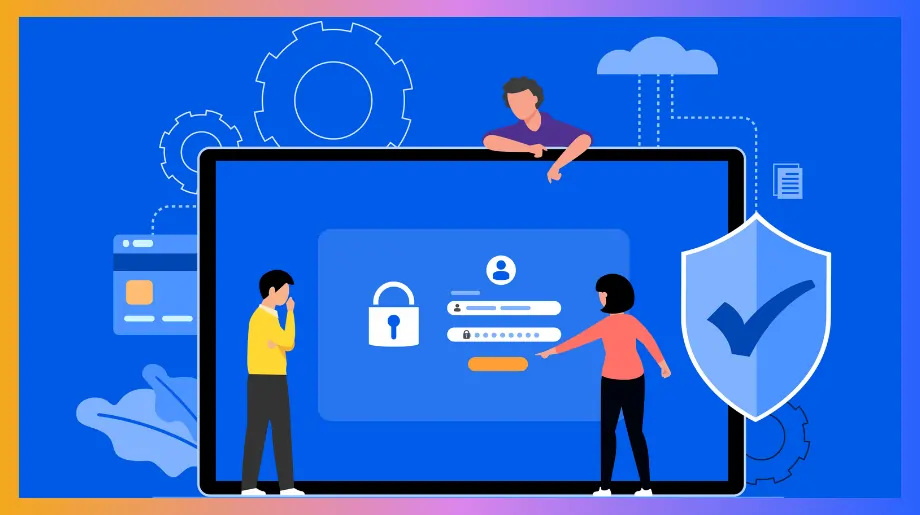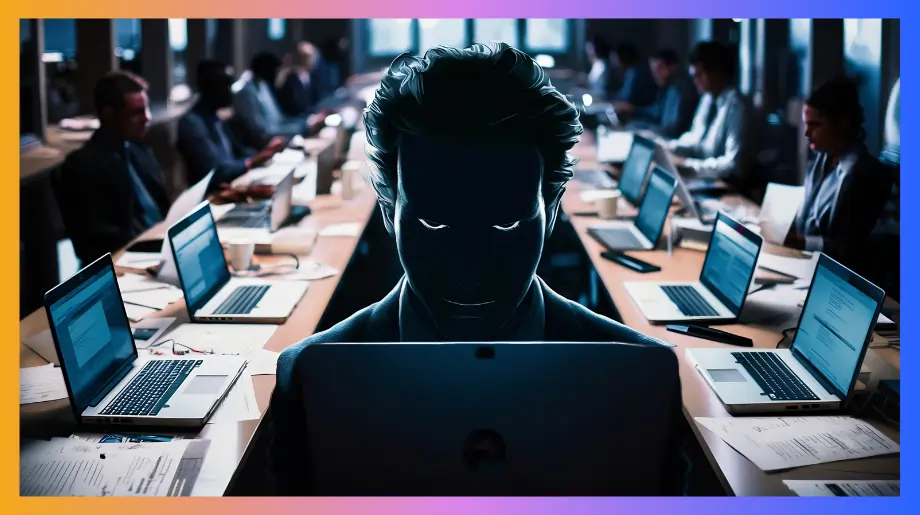Multi Factor Authentication changes the shape of defense. It verifies presence through layers of proof. Something known. Something held. Something that cannot be copied. Each layer stands as its own guard. If one fails the others remain.
This is where multi factor authentication shifts from simple steps to real strategy. Identity becomes a checkpoint not an open door. Systems are protected to keep daily work steady and safe.
This blog explains what multi factor authentication is and how it works in simple steps. We also look at how enterprises use these layers to protect data and support trust in teams.
What is Multi-Factor Authentication and How Does it Work?
Multi Factor Authentication is a security method that uses more than one step to confirm identity. It is used in banking office systems, email apps and social platforms. The idea is to stop unwanted entry even if someone learns a password.
These three factors are the main ways to prove identity. They work together as layers and you see how they strengthen the login process.
- Knowledge Factor. This factor is something a person knows such as a password or a PIN. It is the first layer of login. It checks memory based proof. When more layers support this step the value becomes clear because one step alone is weak against modern threats.
- Possession Factor. This factor is something a person holds such as a phone or a hardware token. The system sends a code or prompt to this device. Only the real holder can respond. This stops many remote attacks.
- Biometric Factor. This factor is based on body traits such as face or fingerprint. It is tied to the person and is not easy to copy. It adds trust to the login process. When used with the other layers it forms a strong shield for digital identity and account protection.
Why Enterprises Need Multi-Factor Authentication?
Enterprises handle large amounts of data and daily operations that must stay safe. Multi Factor Authentication helps confirm identity in more than one step.
Large networks have many users and many sign in points so strong checks matter. With layered security an enterprise reduces risk and grows trust among team partners and clients.
- Stronger Identity Check. Enterprises deal with many user accounts across many tools. A simple password cannot hold against modern threats. When extra steps are added the value becomes clear because attackers must push through each layer.
- Control Over Access Events. Enterprises track when and how access happens. A device prompt or a code sent to a phone helps confirm the real person at the real moment. This reduces remote attack success.
- Trust and Compliance. Many industries require strong login protection to meet policy rules. Biometrics and device checks support these needs. It shows clients and partners that the enterprise takes data safety seriously.
What are the Top Multi-Factor Authentication Benefits?
Multi Factor Authentication gives layered identity checks in digital systems. It is used in banks offices and cloud platforms. Multi Factor Authentication adds extra proof steps. These steps can be a code, a device or a body scan.
1. Improves Security Across the Organization
Multi Factor Authentication raises the safety level of shared networks. Large teams and many devices create many entry points. A layered sign in helps confirm the real user at the real moment. This builds strong trust in daily work. This step helps you keep account control even if a password leaks.
- Layered Gate Check. This process gives more than one door to open. A password is checked first then a second proof is needed. It also slows intrusion so response teams can act in time.
- Device Based Approval. A secure code or prompt is sent to a personal device. Only the real holder can respond. Remote attackers cannot pass this step.
- Biometric Confirmation. Fingerprint or face scan checks are tied to the person. They cannot be shared or copied easily. It works well in offices that handle client data internal strategy or financial records.
2. Ensures Regulatory Compliance and Audit Readiness
Many industries require strong identity checks. Rules in healthcare, finance and government demand proof of secure access. Multi Factor Authentication supports these needs. Logs also show when and how sign-in events happen.
- Meets Industry Rules. Regulations often ask for layered login steps. Multi Factor Authentication fulfills these requirements. This prevents fines and legal issues. Teams can show that data control is active and stable.
- Clear Access Records. Each sign in event is recorded with a time device and method. These records help review systems. When a problem happens the trail is easier to study.
- Stronger Internal Policy. Companies set internal rules for safe access. Multi Factor Authentication supports those rules. This creates a shared foundation for safe digital work across the whole structure.
3. Protects Against Identity Threats and Cyber Attacks
Identity based attacks are common in digital networks. Multi Factor Authentication blocks most of these attempts at early steps. When systems require body or device proof attackers fail.
- Stop Stolen Password Use. Even if a password is known the second proof step denies the attacker. This blocks many simple intrusion attempts. It helps systems avoid quick break-ins.
- Limits Lateral Movement. Attackers often move inside a system once they enter. Multi Factor Authentication stops this by requiring identity checks again within systems. Each door inside has a guard.
- Protects Remote Work. Teams connect from many places and devices. Multi Factor Authentication checks identity at sign in no matter the location. This supports modern work patterns.
4. Simplifying Access Without Reducing Protection
A person signs in with steps that feel familiar. The system quietly adds deeper checks. This balance keeps daily work smooth. Users stay safe without feeling slowed. It supports secure flow in large and small teams.
- Simple Login Flow. A password is entered then a quick second check confirms identity. The importance of multi factor authentication appears here because security becomes stronger without making everyday access difficult for users across departments and locations.
- Clear Prompts. Instructions on screen stay short and direct. The user knows what to do without confusion. This reduces support tickets and wasted time. It encourages confidence in the login process. Employees feel supported rather than blocked.
- Reduced Friction. The second step uses familiar tools such as a phone or fingerprint. Users move through access smoothly. They do not face long wait times or complex steps. Safety does not require hardship.
5. Strengthens Remote Workforce Security
Remote work introduces varied networks and devices. Multi Factor Authentication confirms identity at every sign in. It ensures only the correct person enters business systems.
- Location Safe Entry. The sign in process remains consistent in any location. A second step confirms identity no matter where access occurs. Remote users connect confidently. The system lowers risk from unknown networks.
- Secure Device Use. Workers often use personal and company devices. The second factor confirms the real account holder. This prevents attackers from using stolen passwords alone. Data stays protected even if one layer is breached.
- Stable Work Flow. Remote teams maintain focus. Access remains reliable. The method avoids disruption to productivity. People work freely across regions without risking account exposure.
6. Reduces the Risk of Account Takeovers
Account takeovers happen when attackers gain entry with stolen credentials. Multi Factor Authentication blocks these attempts by requiring proof beyond a password. Even leaked or guessed information cannot open the account alone.
- Password Leak Defense. A stolen password is not enough to enter. The attacker fails at the second verification step. The account stays locked against unauthorized access. This protects sensitive files and communication channels.
- Limited Damage Spread. Even if the first layer is compromised additional layers prevent deeper movement inside systems. Attackers cannot freely explore internal tools. This limits risk to the smallest possible zone.
- High Confidence Access. It becomes harder for attackers to imitate real users. Trust grows when each layer confirms the real person and blocks quiet intrusion. It becomes easier to notice what does not belong and act before harm spreads.
7. Provides Real-Time Alerts for Suspicious Activity
Monitoring sign in patterns helps catch odd behavior early. When something unusual occurs the system sends alerts. This allows fast action before harm grows. Teams respond quickly and effectively.
- Instant Notification. Alerts appear when login attempts differ from normal patterns. Users and security teams can respond quickly. This prevents damage before data is taken or altered.
- Security Insight. Alert history reveals where risk is rising. Safety teams adjust policies based on real behavior instead of guesswork. This improves long term protection. It also helps organizations understand how attackers attempt entry and prepare stronger responses.
- Continuous Protection. It does not rely on manual checks. Suspicious attempts are flagged without delay. This constant vigilance is one of the key mfa benefits that helps maintain security even when users are busy with daily tasks.
Enhance Enterprise Security with Infisign MFA
Infisign offers a lightweight and high-performance MFA solution that keeps authentication fast and user-friendly. Through UniFed, all customer identities are secured and managed from one central place. The IAM Suite enables seamless authentication with face scan, fingerprint, iris recognition, or device-based verification, ensuring strong protection while keeping the login process smooth and uncomplicated.
Access
Universal Single Sign-On
Infisign’s SSO provides one secure access point for all applications. Setup completes in 4 hours and users sign in with a single set of credentials. Social login support allows sign in through Google or Facebook without new password creation.
Passwordless Authentication (FIDO2 + WebAuthn)
Infisign’s passwordless authentication removes passwords entirely. It uses biometrics and device passkeys built on FIDO2 and WebAuthn to verify identity.
Passwordless sign in can use face or fingerprint on a trusted device, hardware security keys, passkeys, QR-based login, or magic links for direct access, so the user can enter securely without needing a password.
You sign in once and reach all applications. Zero knowledge proof protects secrets from phishing. No password resets or support tickets. The experience stays fast and secure.
Verify
Adaptive Multi-Factor Authentication
Infisign delivers adaptive multi-factor authentication that works smoothly across cloud, on-premise, and hybrid environments. You stay protected against phishing and unauthorized access.
Why Infisign Adaptive MFA Stands Out
- Dynamically adjusts authentication requirements based on user location, device, role, and risk level
- Works with any authenticator app your team already uses
- Extends SSO and MFA to legacy and on-premise applications where traditional solutions fail
- Supports biometric authentication (face/fingerprint) and device passkeys for phishing-proof logins
- Enables a passwordless experience using OTPs, QR codes, biometrics, and passkeys
Supported Authentication Methods
- Biometrics (Face or fingerprint) on trusted devices
- FIDO2 & WebAuthn hardware keys (Phishing-resistant & passwordless)
- Time-based one-time codes (TOTP) from authenticator apps
- Push notifications on trusted devices
- Email / SMS codes as fallback options
- NAG and MPWA support to bring biometric authentication to legacy and on-premise apps without native MFA support
Control
Conditional Access and Risk-Based Controls
Access can shift based on context. If a lower-privilege user attempts to open high-sensitivity tools or download protected data, the system blocks the action or requests stronger proof. Policies adjust continuously based on live conditions.
Protect
Login Thresholds and IP Throttling
Repeated login attempts are monitored. When behavior looks unsafe, rate limits slow or block access to stop brute-force attacks. This keeps uptime reliable and prevents automated credential attacks from gaining ground.
Privileged Access Management
Privileged Access Management covers high level admin accounts that control core systems. With Infisign’s PAM elevated rights appear only when the task begins and they end when the task is finished. Just-in-time access gives admins and outside experts temporary control instead of letting those rights stay open all the time. The principle of least privilege means each account only receives the exact access it needs and nothing more.
Audit
Identity Governance and Administration
Infisign holds access at the level it should be and nowhere beyond it. Each user receives only what their role requires and nothing extra stays active. All permissions sit in one clear view for oversight. Automated access reviews run on their own to correct drift and keep compliance steady.
Protect access at every login without adding friction. Infisign delivers adaptive MFA and passwordless authentication on that scale. See how it fits your environment.
Start with a short product walkthrough today.
FAQs
What is the main advantage of implementing multi-factor?
The main advantage is stronger security. Even if a password is stolen the account stays protected because another proof is needed. This extra step blocks common attacks and lowers the chance of unauthorized access. It helps keep data safe and supports trust in daily digital activities.
What is the main disadvantage of MFA?
The main disadvantage is a small increase in sign in time. Users must complete extra steps such as entering a code or confirming on a device. Some may feel this adds effort. However the added protection generally outweighs the slight delay during regular work routines.
What risks does MFA mitigate?
MFA reduces the risk of stolen passwords being used to break into accounts. Even if a password leaks the attacker cannot pass the second layer of proof. This helps stop identity fraud account takeover and quiet movement inside systems. It also limits data loss because access is checked at each step and you keep control even if one layer is exposed.





















